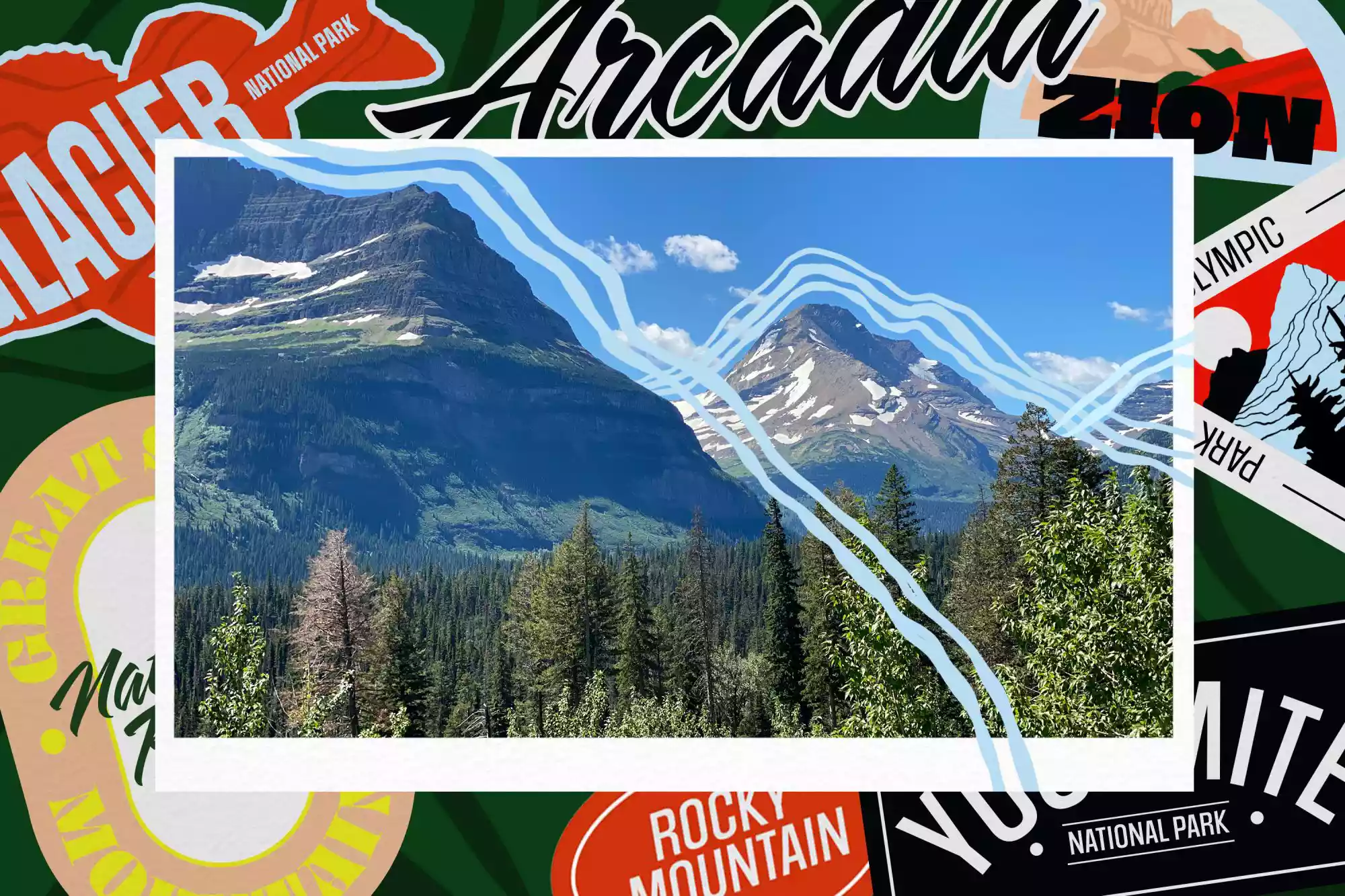The U.S. is home to 63 national parks and 423 national park sites, and it took a global pandemic to make many of us realize just how lucky we are to have them. With flights grounded and borders closed, we were forced to find solace in our own surroundings, leading many of us to discover the healing power of nature for the very first time. As bucket-list trips across the world were canceled, Americans finally took the time to camp, hike, sightsee, and unwind in our own backyards — and in doing so, we found that sometimes, the trip of a lifetime is just a drive away.
A Shift Toward Nature
In 2020, the world shut down, but something inside us cracked open. For the first time in decades, the natural world took priority over superfluous distractions. There was a collective urgency to return to nature’s elements: we deserted cosmopolitan metropolises, started growing our own vegetables, and hiking. Park pilgrimages were rising at a faster rate than the banana bread ballooning in everyone’s ovens.
Taking the Park Pledge
Until lockdown, I considered myself a seasoned international traveler but not a road tripper by any means. I’d seen the cloud forests of Costa Rica but had never wandered into the woods on my home turf. After my plans to go to Greece, Cuba, and Colombia came to a halt, I decided to take my own park pledge and explore some of the top national parks in America: Yellowstone, Grand Teton, Glacier, and Theodore Roosevelt.
Yellowstone: The First Stop
:max_bytes(150000):strip_icc():format(webp)/NationalParksThatSavedUS-Map-2000-6043207a41f84278b87d42da72d86373.jpg)
Yellowstone was first on my list — and, it seems, everyone else’s: After it reopened in May, 91% of its summer tourists drove more than 200 miles to visit. Yellowstone is not a secret by any means, and you spend a lot more time waiting to explore a trail than actually exploring, so it lacked that man-lost-in-the-wild vibe. There were throngs of people everywhere, and we had to stay off-site at Madison Arm Resort campground and Marina. The park itself is big, satisfying, and about as all-American as a cheeseburger. The child in me was excited to see the Old Faithful geyser in all its effervescent glory. Given that a showerhead in a cramped bathroom had been my only water source to that point, the Tower Fall waterfall amazed me with its grand size and velocity.
Unexpected Joys at Grand Teton
:max_bytes(150000):strip_icc():format(webp)/NPs_Yellowstone_StatCard_Longform-2000-239b4a0aa14f400b90fbe59dd3bedf8c.jpg)
I was impressed with Yellowstone’s wildlife (I’m a city boy, so seeing elk and bison is a significant experience) until we took a spontaneous detour to Grand Tetons. I had missed the memo on that one when I was in planning mode. As a seasoned traveler, I usually organize every segment of my trip with great detail, so spontaneity isn’t typically my strong point when it comes to itinerary planning. However, seeing as 2020 had no regard for rulebooks, I decided to make a short detour to visit Grand Tetons, especially since my closest friend had extolled its virtues. I’m glad I did, as it became my favorite park by far.
The Healing Power of Nature
:max_bytes(150000):strip_icc():format(webp)/VisitingNPFirstTime_2-2000-83baee2da8ac444cb3291a043efee85a.jpg)
So much of 2020 felt heavy, especially as a Black man in the states. Even a cheerful, chubby unicorn like myself felt jaded at times. One thing I learned at Grand Tetons was that there was medicine in nature. Setting up camp under the trees and taking time away from doom-scrolling helped me clear my mind and focus on the beauty around me. I could escape my own thoughts and allow myself to appreciate a bear cub sighting—a profound experience. There was also a sense of national pride that washed over me. I realized how fortunate I was to be born in the U.S., with a vast and varied landscape at my fingertips. I had spent too much time mindlessly watching life unfold on a screen and had forgotten how enriching it is to connect with others (from a safe distance, of course). My wife and I had encounters with visitors from all over the nation, and everyone was smiling, open, and thankful to engage with nature again.
Glacier National Park and the Impact of Tourism
:max_bytes(150000):strip_icc():format(webp)/VisitingNPFirstTime_1-81362e11d65944509fb318d0cc0c4ad1.jpg)
After Grand Teton, we drove to the west entrance of Glacier National Park. In “normal times,” thousands of tourists travel across tribal territory to reach this legendary locale. However, during the “new normal,” the east entrance was sealed off to protect the vulnerable members of the Blackfeet Nation. As a travel enthusiast, I witnessed the all-too-familiar conundrum of “pandemic tourism,” where small business owners found themselves choosing between supporting their livelihood or saving lives. We cruised along the iconic Going-to-the-Sun Road, soaking in the breathtaking views of emerald mountains and crystalline lakes. I recently learned that the Blackfeet Tribal Business Council voted to re-open access to the park. Now that I’ve scratched the surface, I eagerly look forward to returning, exploring the other side of the park, and supporting local independent businesses that I couldn’t patronize during my last visit.
The Legacy of Theodore Roosevelt
:max_bytes(150000):strip_icc():format(webp)/NPs_COVID_InfoCard-2000-ed1149a67028454992edf2dacaf221a5.jpg)
We concluded our journey with a visit to Theodore Roosevelt National Park, a name that now carries much more significance after experiencing the beauty rooted in his conservation legacy. The past year was riddled with monumental loss on a level we’ve never seen before. Still, a survivalist instinct emerged, and I genuinely believe the collective exodus to the wilderness was the only way many could connect to something other than fear. Roosevelt articulated the mood perfectly when he mentioned we should “do what you want, with what you have, where you are.” That became the mission for every one of the 237 million visitors who enjoyed a park last year; it certainly was the case for me.




